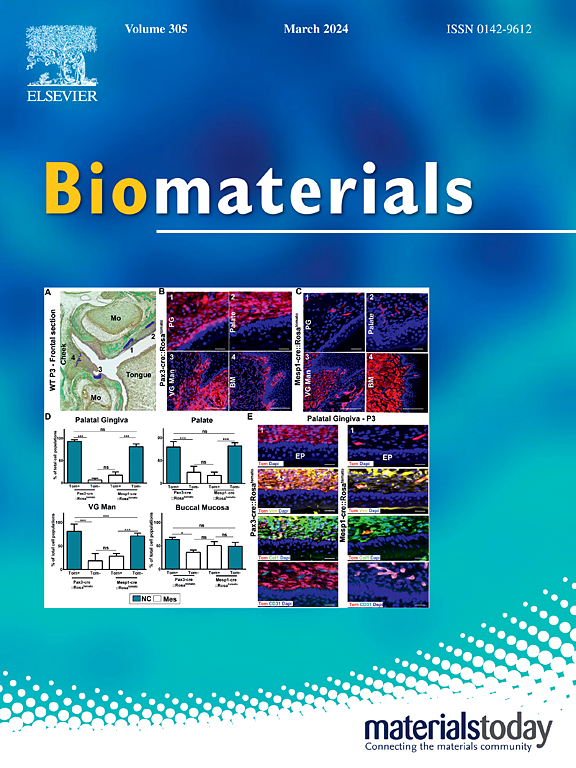Clearance of senescent vascular smooth muscle cells retards aging-related restenosis following bioresorbable scaffolds implantation
IF 12.8
1区 医学
Q1 ENGINEERING, BIOMEDICAL
引用次数: 0
Abstract
In contrast to bioinert metal stents, the degradation of bioresorbable scaffolds (BRS) induces complex mechanical changes and accumulation of degradation products, potentially leading to adverse events following implantation into stenotic arteries. Atherosclerosis (AS) is a typical age-related disease, plaque formation and changes in vascular mechanical properties can significantly affect the process of restenosis and vascular repair after BRS implantation. The aging of vascular smooth muscle cells (VSMCs) is earlier than that of endothelial cells (ECs) and plays a decisive role in the mechanical properties of blood vessels. This study investigated the impact of senescent VSMCs (s-VSMCs) on the effectiveness of 3-D printed poly-l-lactide BRS implanted in the aged abdominal aortas of Sprague-Dawley rats over a 6-month period. Synthetic phenotype switch of s-VSMCs contribute to aging-related in-stent restenosis (ISR) and hinder neointima recovery, by reducing positive remodeling and impeding the neointima recovery of ECs. Further analysis indicated that the regulation of ECs was influenced by mechanoresponsive miRNAs and increased stiffness induced by s-VSMCs. To effectively eliminate s-VSMCs and accelerate vascular repair, two types of senolytic-coated BRS were developed and tested with ABT-263 and young plasma-derived exosomes. These results highlight the critical role of s-VSMCs in increasing aging-related ISR and delaying intima recovery following BRS implantation. The senolytic coatings, with their ability to clear senescent cells, promoted vascular repair. This study offers valuable insights for potential mechanisms responsible for the elevated ISR risks associated with BRS in aged aortas and the development of advanced BRS coatings.

求助全文
约1分钟内获得全文
求助全文
来源期刊

Biomaterials
工程技术-材料科学:生物材料
CiteScore
26.00
自引率
2.90%
发文量
565
审稿时长
46 days
期刊介绍:
Biomaterials is an international journal covering the science and clinical application of biomaterials. A biomaterial is now defined as a substance that has been engineered to take a form which, alone or as part of a complex system, is used to direct, by control of interactions with components of living systems, the course of any therapeutic or diagnostic procedure. It is the aim of the journal to provide a peer-reviewed forum for the publication of original papers and authoritative review and opinion papers dealing with the most important issues facing the use of biomaterials in clinical practice. The scope of the journal covers the wide range of physical, biological and chemical sciences that underpin the design of biomaterials and the clinical disciplines in which they are used. These sciences include polymer synthesis and characterization, drug and gene vector design, the biology of the host response, immunology and toxicology and self assembly at the nanoscale. Clinical applications include the therapies of medical technology and regenerative medicine in all clinical disciplines, and diagnostic systems that reply on innovative contrast and sensing agents. The journal is relevant to areas such as cancer diagnosis and therapy, implantable devices, drug delivery systems, gene vectors, bionanotechnology and tissue engineering.
 求助内容:
求助内容: 应助结果提醒方式:
应助结果提醒方式:


